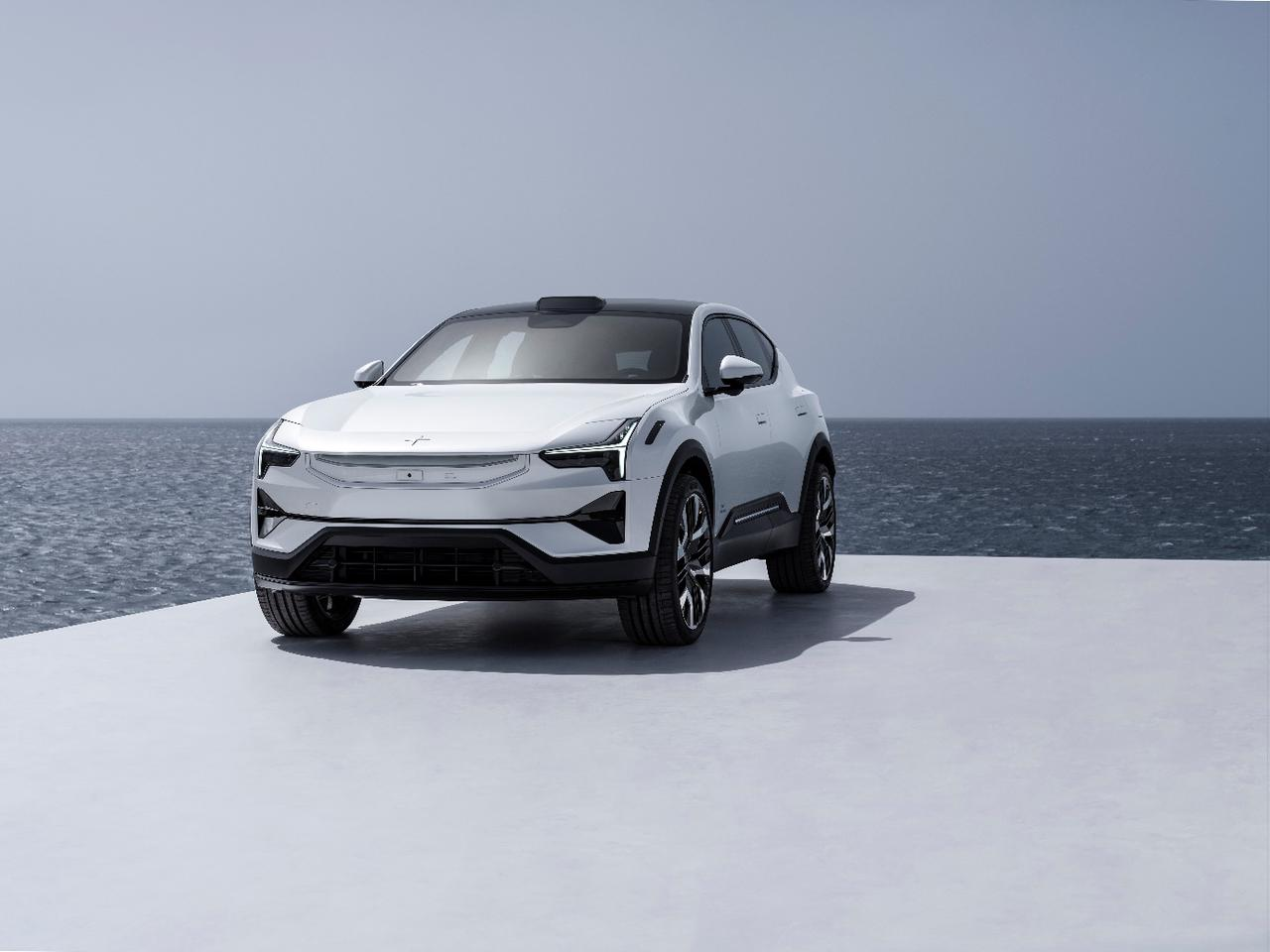On March 17th, 2023, Polestar 3 was officially launched in the Chinese market, along with a new pricing system:
- Dual-motor Long-Range version priced at RMB 698,000
- Dual-motor Performance version priced at RMB 798,000
As for powertrain, all variants of Polestar 3 come with a standard 111 kWh battery pack, providing different ranges of 620 km and 650 km respectively, depending on the motor configuration.
Both versions come with a dual-motor system, with maximum power outputs of 360 kW and 380 kW, respectively. The latter, with 380 kW, has a top speed of 4.7 seconds from 0 to 100 km/h.
In addition, Polestar 3 is equipped with a 500 Hz electromagnetic suspension, a dual-chamber air suspension, and Brembo brake calipers, ensuring excellent handling and a brake distance of 34 meters from 100 km/h to full stop.
Mr. Feng Dan, the General Manager of Polestar China, said:
“In 2023, Polestar is celebrating its China Year. Starting with Polestar 3, we will actively expand into the ultra-luxury electric vehicle market, launching a new product every year. Since the launch and pre-sale of Polestar 3 in China last year, our Chinese team has further focused on understanding our customers’ needs.”
“Besides offering luxury electric vehicle products exceeding customer expectations, Polestar will also provide customized customer benefits for Chinese customers: The first car owner can enjoy lifetime quality assurance, free maintenance, and lifetime roadside assistance. Each owner will also have a butler and personal assistant to provide exclusive services continuously.“
At the launch event, Polestar’s Design Director, Mr. Maximilian Missoni from Sweden, was also present. He said:
“Polestar 3 combines pure design, high-performance driving experience, a forward-looking sustainable concept, and pioneering technology, embodying the essence of the brand and redefining the SUV in the age of electrification. With a luxury pure electric SUV as a breakthrough, Polestar will accelerate its brand upward.”
Design-Driven, the Essence of Polestar 3
Exterior
Speaking of exterior design, Polestar’s style is definitely a breath of fresh air for mid-to-large-sized luxury SUVs. The essence of Nordic design lies in its simplicity and striking attractiveness, unified and clean. For an SUV with dimensions of 4,900 * 2,120 * 1,627 mm and a wheelbase of nearly 3 meters, Polestar 3 feels like a football player in a white suit, revealing strong muscles and power.
The “bi-wing” headlights of the Polestar 3 break out of the design framework of the “Thor’s Hammer” and echo the shape of the Polaris badge. The sharp corners indicate that this is a more sporty model, but the 1.3 million-pixel LED headlights are hidden inside. The taillights are also LED sources, with 168 independent light sources designed in the through-type lamp group. The water-flow lighting design is quite “sophisticated”.
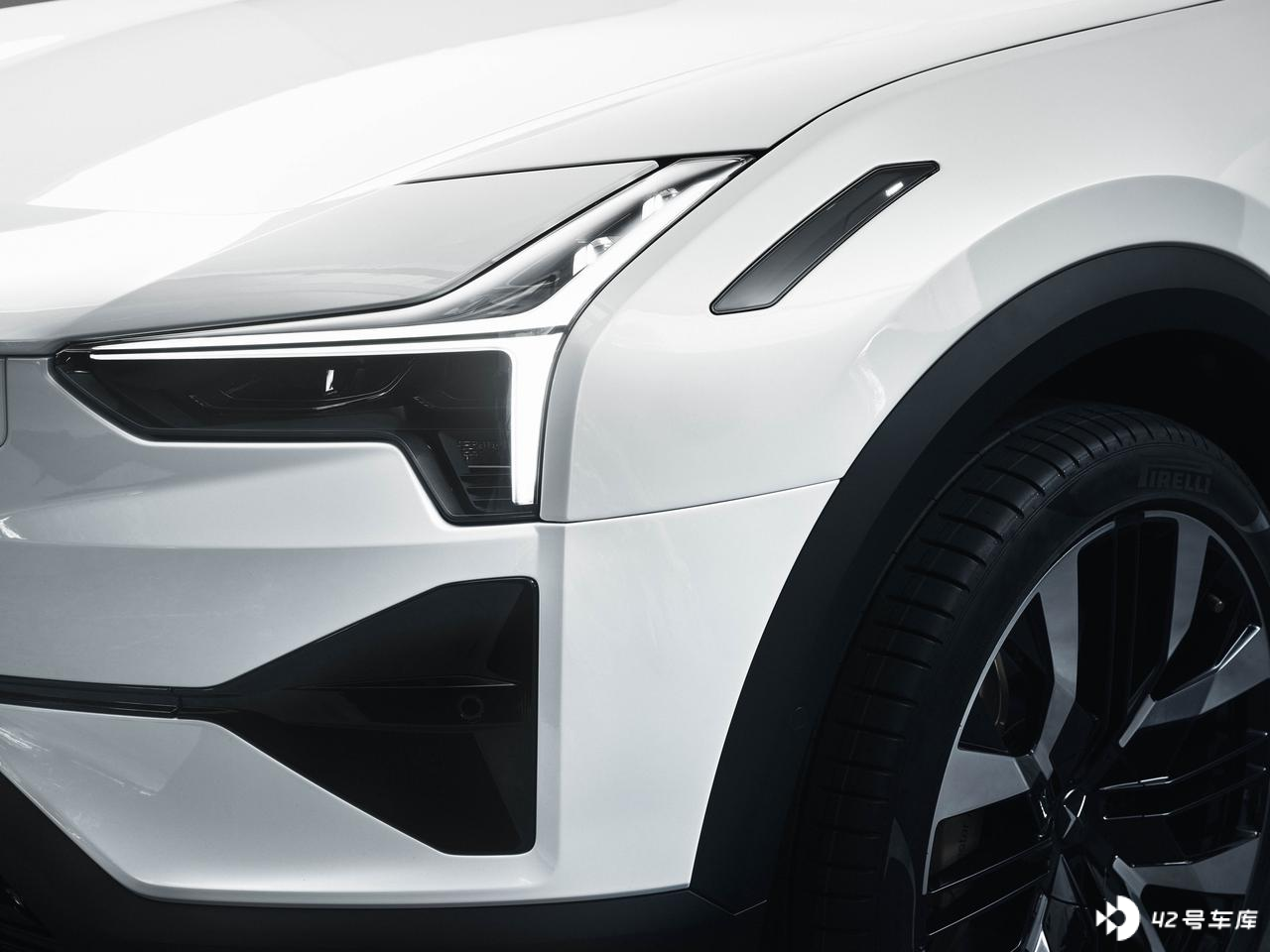
Traditional automakers will go to great lengths to hide the front sensors in the grille, fog light area, etc. to maintain their design integrity. The Polestar 3 directly divides a “SmartZone Intelligent Zone”. However, this area choose materials in the same color as the car paint, and the sensors directly become part of the front-end design elements. Five cameras, five millimeter-wave radars, 12 ultrasonic radars, and optional Luminar lidar make up the external perception of the Polestar 3. As a flagship, its intelligent hardware keeps up with the mainstream.
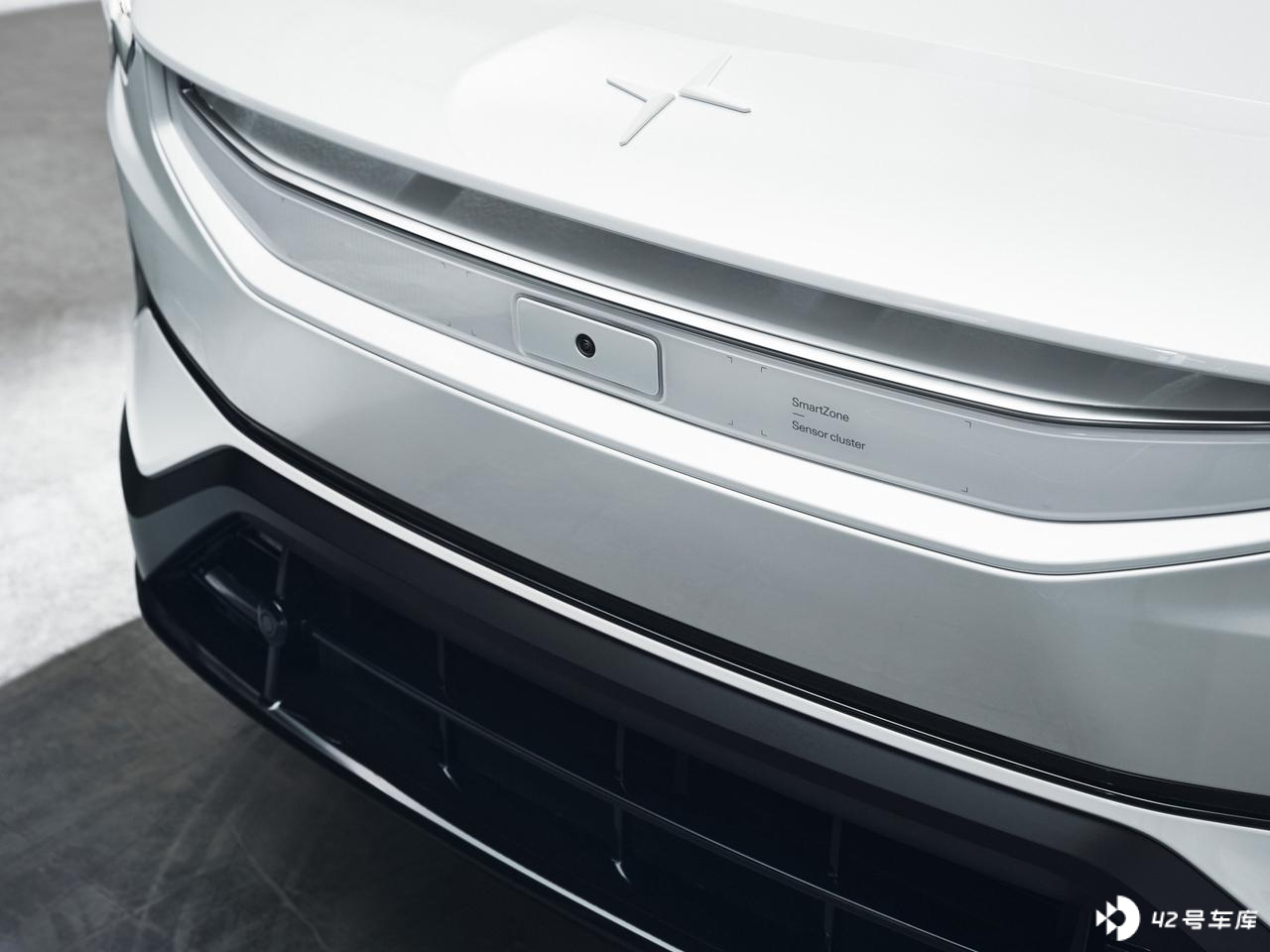
The air dynamic openings visible all over the body are hidden under a unified design at first glance, but careful observation will reveal the ingenuity inside. For example, the flow deflectors of the engine hood area, the rear flow deflectors, and the rear air wings work together to integrate the front air flow and streamline the rear tail flow, unifying functionality and design language. The roof line of the Polestar 3 decreases and extends behind the C-pillar, giving people a “squatting” feeling, which matches the design of the long front.
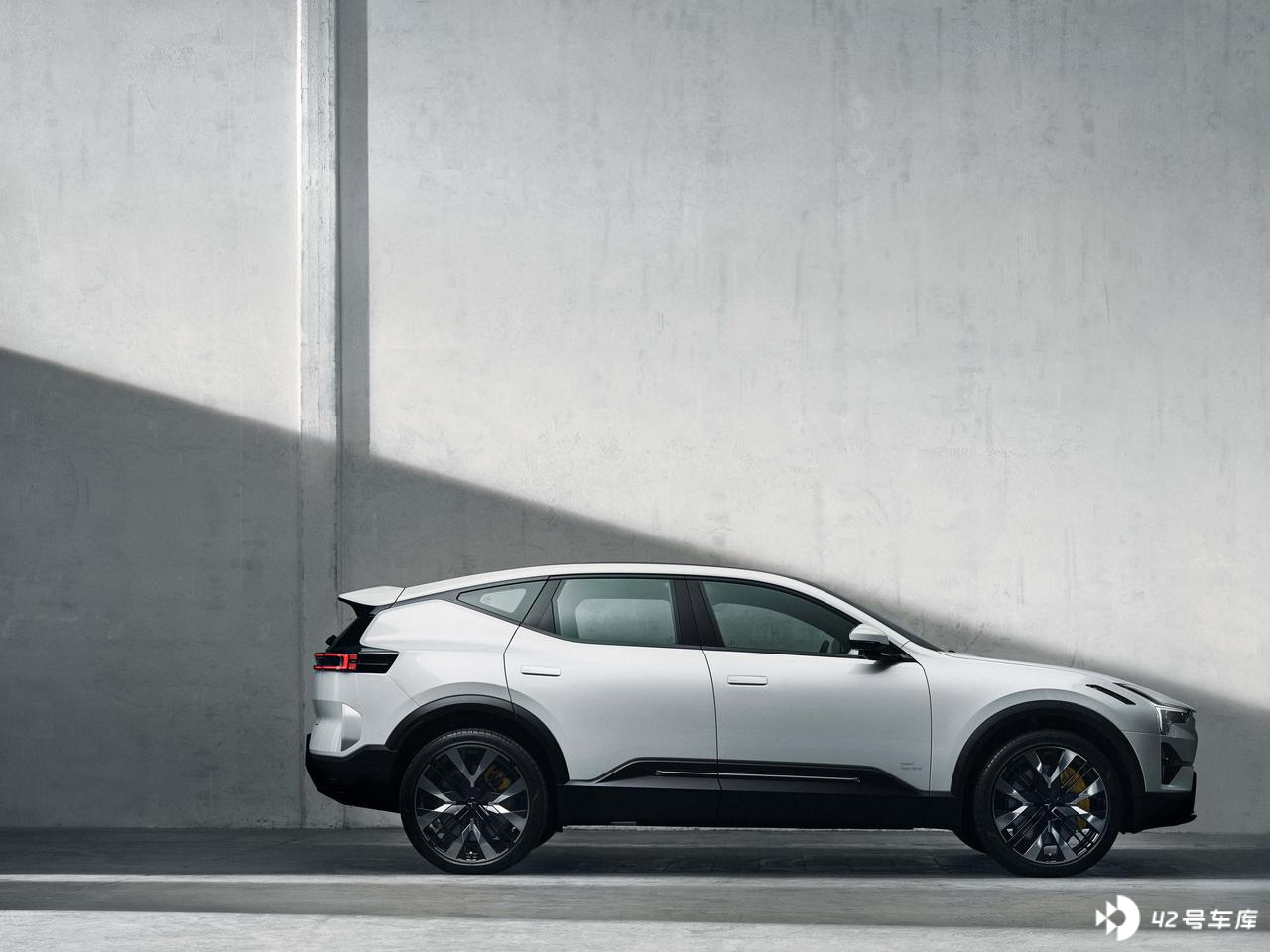
InteriorWhen it comes to million-level car models, they will all have mainstream configurations for the interior. For example, Bowers & Wilkins speakers with 25 speakers and 1,610 W, infrared insulation glass, privacy interlayer sound insulation glass, windscreen with special coating for HUD, Qualcomm Snapdragon intelligent cockpit, 14.5-inch central control screen, electric suction doors, etc.
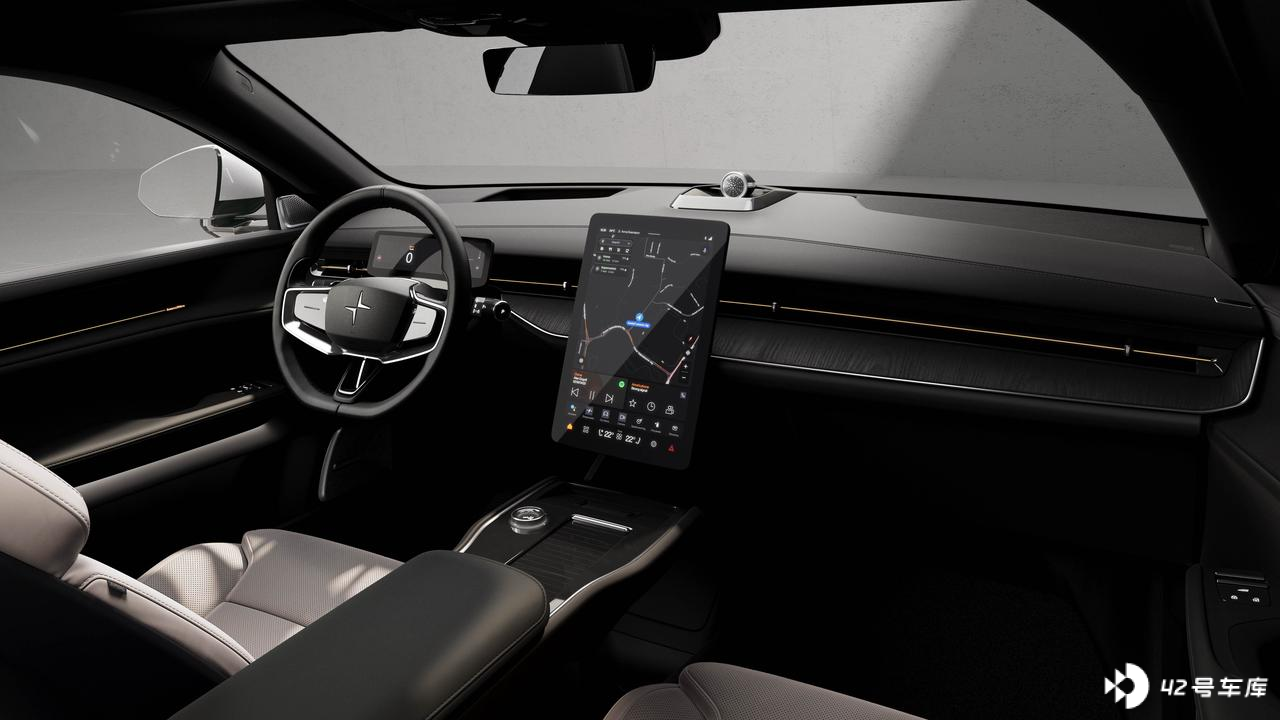
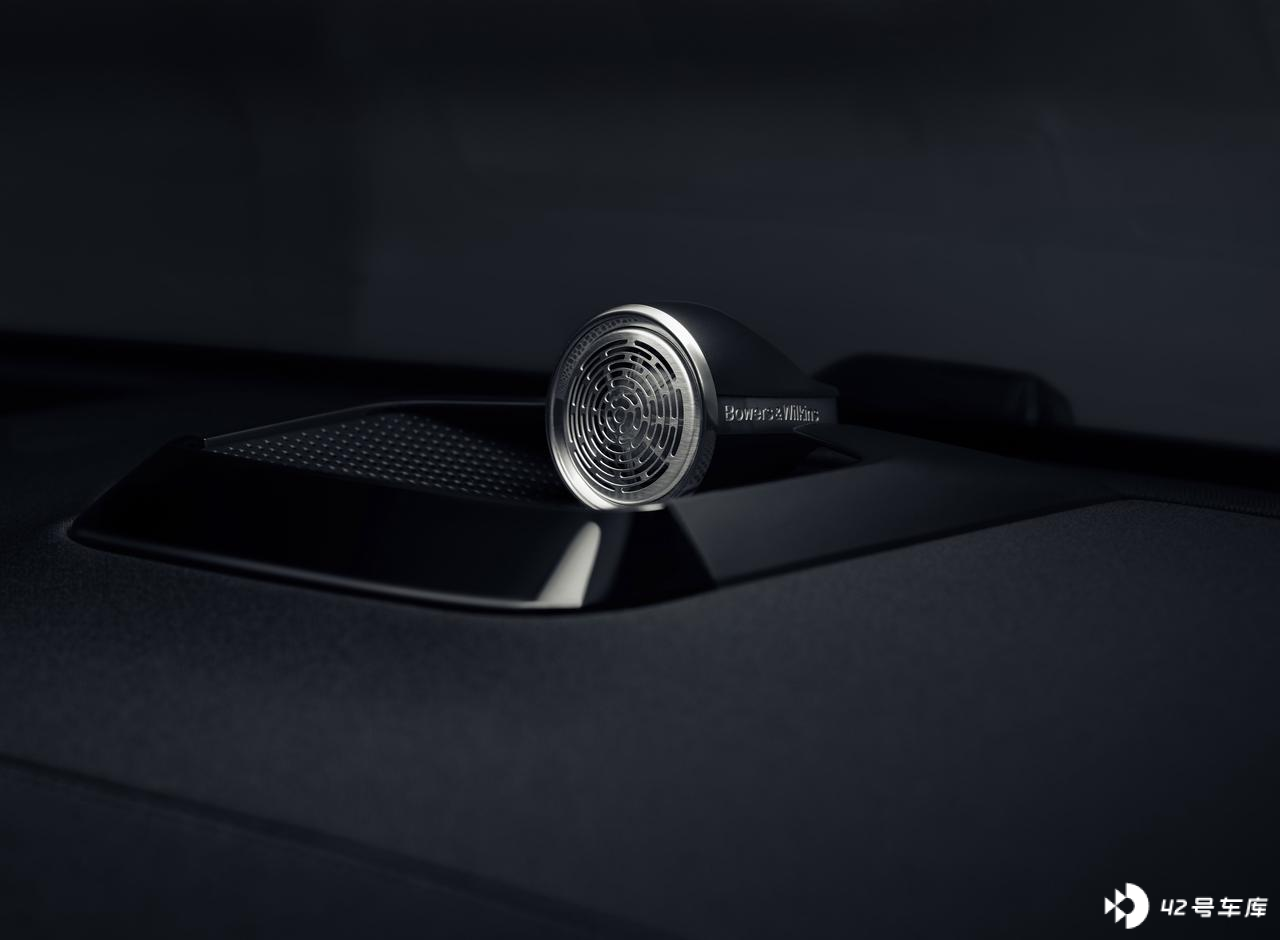
However, the “non-mainstream” aspects of Nordic brands are also evident: MicroTech environmentally-friendly materials, traceable wool products, eye-catching “Swedish gold” seat belts under an overall low color saturation scheme, and reserved music knobs.
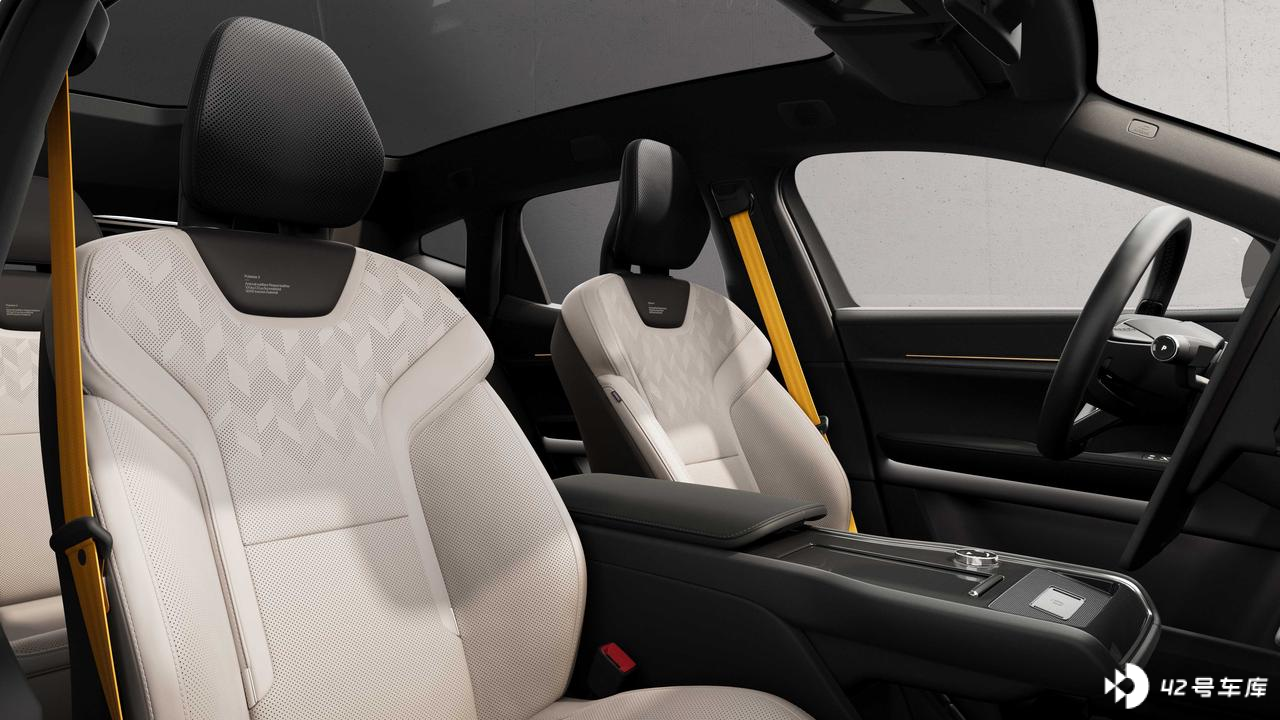
By the way, there are also two particularly interesting Easter eggs. First, there is the “Polestar high-rise” logo on the roof, which perfectly corresponds with a hidden code in Chinese culture. Second, there is the Polestar 3’s ambient light color temperature of 5,000 Kelvin, which is also within the spectral range of the light emitted by the North Star Type A. It’s so intriguing!
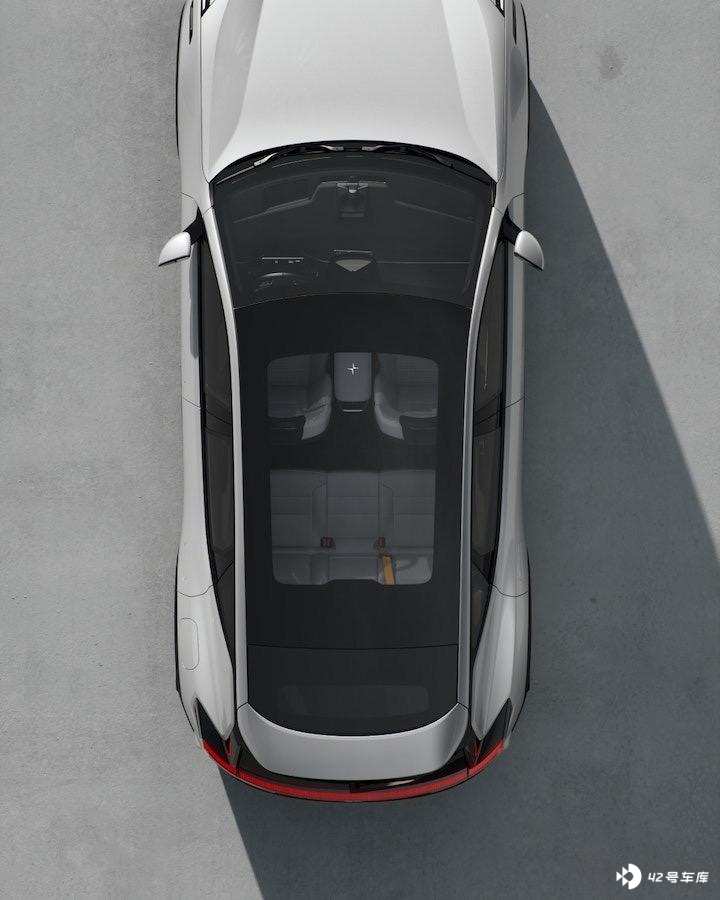
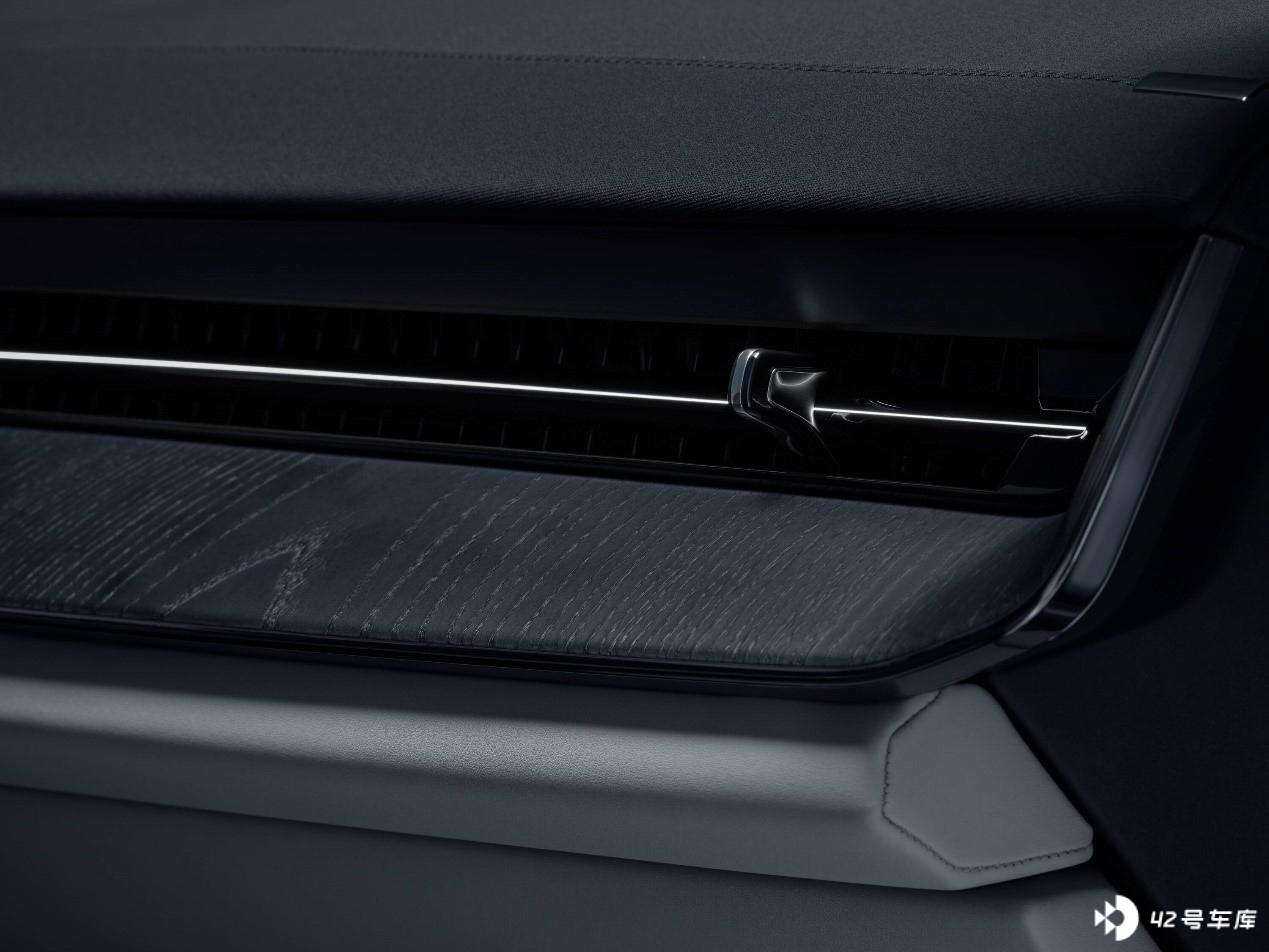
Finally, the choice of a 5-seat layout for the Polestar 3 reveals a difference from the Volvo EX90. This is not a car that tries to have everything. Its unique product design is characterized by a more unconventional and individualized style, a more athletic core, environmental protection, Nordic-style reserve, and luxury.
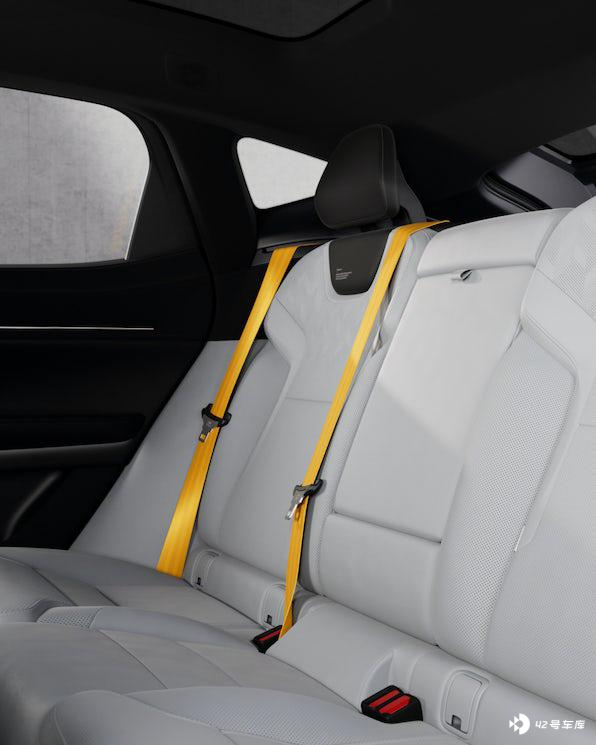 ## Q&A with Maximilian Missoni, the global design director of Polestar
## Q&A with Maximilian Missoni, the global design director of Polestar
Reporter: You mentioned that simplifying complexity will become increasingly challenging in the future. Can you give us an example?
Maximilian Missoni:
Many companies and brands are exploring what true luxury and simplicity mean. In China, where innovation and transformation of electric cars happen rapidly, this exploration reflects deeper meanings.
Morecompanies and brands focus on traditional luxury elements which appeal to many consumers through brighter colors and curious contents. I hope traditional luxury can be expressed more directly to consumers.
As a brand from the Nordics, we explore how to truly embody this higher quality, higher level of simplicity and purity. We balance the elements we add to achieve this goal. These elements are not only a simple stacking, but can also be reflected in the details.
I believe that what we emphasize in the design and provision of high-end products should prioritize the uniqueness of the brand, rather than dazzling packaging. This approach is not exclusive to our brand, it is a natural and continuous process.
Soon we will launch Polestar 4 and Polestar 5, among which Polestar 5 is designed based on the concept of the Precept. We listened extensively to feedback from the Chinese market during the development process. We look forward to promoting our brand advocacy and driving concept through future products, and hope that the Polestar brand will continue to develop by listening to feedback from Chinese consumers.
Reporter: Regarding Chinese consumer feedback, what kind of electric car designs do you think Chinese consumers prefer? Can you be specific?
Maximilian Missoni:
It is essential to truly listen to the voice of Chinese consumers, and we have been doing so. Although Polestar 3 has not yet been delivered to Chinese consumers, I believe there will be some elements on this car that they will like.In terms of space and luxury, there are significant differences between Chinese and European consumers. European consumers are more concerned about the performance, power, and driving experience of the vehicle. Therefore, starting from the Polestar 3, we focus more on its sporty feel, while also hoping to carry this “sporty feel” through to our future SUV and sports car models.
From the Chinese market, we have also observed that consumers prefer large SUVs, value the luxury of SUV models, and the Chinese electric vehicle market is open-minded and accepting of new ideas and products. We believe that the Polestar 3, a mid-size ultra-luxury pure electric SUV, will not disappoint them.
Reporter: Do you think that there are more difficulties in designing the Polestar 4 as a mid-size SUV compared to the Polestar 3?
Maximilian Missoni:
The Polestar 4 will be unveiled soon, so I cannot disclose more details, but I can ensure that the Polestar 4 will dazzle everyone once it is released. This is because every detail has been fully considered in its design process, in order to break the stereotype of traditional mid-size SUVs.
Reporter: The Polestar 3 will lay the foundation for the next generation of Polestar products. What were the important focus points when designing the Polestar 3?
Maximilian Missoni:
The reason why there is a saying that “the Polestar 3 will lay the foundation for the next generation of Polestar products” is mainly for people who are not familiar enough with the Polestar brand. As we all know, Polestar was originally a high-performance department of Volvo Cars, and its development is closely related to Volvo’s history.
Starting from the Polestar 3, we want to showcase our own design and gradually establish a clear distinction from Volvo Cars, forming an independent design language.
Currently, there is a phenomenon of various electric vehicle brands in the Chinese market. Nevertheless, as you can see from the Polestar Precept and the upcoming Polestar 6, among many electric vehicle brands, whenever people see Polestar’s products and designs, they always express admiration for the unique design language.
Reporter: I have followed your social media accounts and noticed that you have posted many sketches and pictures of classic cars, including the XL1. So, I would like to know if you are particularly interested in them?Maximilian Missoni:
I am not an avid car enthusiast, but I chose to become a car designer due to my inherent preferences in this field. In fact, as a car fanatic, it may hinder or hinder my work.
The car you mention should be the one debuted in 2011, but it is surprising that it is already considered an old-timer in your eyes. This reflects some realities, such as some traditional car brands still unable to abandon their past glory. Especially in the Chinese market, people are more concerned about the future development of cars.
Journalist: Chinese consumers have a significant difference in aesthetics compared to the European and American markets. How do you view a purer design language?
Maximilian Missoni:
This phenomenon is not limited to the automotive industry, but there are also many successful cases in fashion or similar industries. For example, Apple’s design, everyone will find that Apple Watch simplifies complexity to the extreme, and the products with simple appearance meet all the functions users need.
At the same time, you mentioned Chinese consumers’ taste issue. We also work closely with the engineering team in China, believing that we have a more in-depth understanding of Chinese consumers. From the current market development trend, many brands or new car models pay more attention to flashy car entertainment systems. I think this will be short-lived.
What Volvo pursues is not such a fast-selling or short-lived surprise. Our goal is to present Volvo’s concept through long-term precipitation, and I believe this can ultimately be accepted by consumers.
If you carefully observe our products, you will find that Volvo 2 is a model that is more in line with the European market, but from Volvo 3 onwards, Volvo 4 and Volvo 5 will be more in line with this international acceptance and pay more attention to the Chinese market.
Journalist: You have seen many electric vehicles in China and internationally. Are there any design elements that you would never use in your electric vehicle design?
Maximilian Missoni:
Just now, you mentioned that the rear-seat screen of a traditional luxury brand is a superfluous element. The best way for me to answer this question is probably to ask why because you have given an appropriate example.
In my opinion, many functions, even if they are later found to be superfluous, conform to the principle that existence is reasonable.Many things may look cool at first glance, but may soon become tedious. That’s why we need to seek inspiration from the history of technological development and find patterns.
Any product is constantly changing, and from these changes, you can discover new things that drive the continuous evolution of products. The underlying rule is that all products will evolve towards fully considering user experience.
I have many specific examples I would like to share with you, but because they involve some future car models, it is not convenient to reveal the details. These new developments are based on currently released car models, and we have summarized some popular elements. Future optimizations will not only be in hardware but also in software, more in line with the preferences of Chinese consumers.
Journalist: The Polestar ambient lighting has only been available in white and gold, which is different from other brands. When Polestar made this decision internally, did the decision come quickly, or were there any discussions involved?
Maximilian Missoni:
Polestar will have some adjustments in the future. Currently, we use white for the extended-range dual-motor version of Polestar 3, and gold for the high-performance version. Different colors will provide car owners with different experiences, and colors also have different meanings and symbolism, which is the driver’s personal choice right. In future car models, we will have some expansion to make the ambient lighting more diverse.
Journalist: Polestar 3 deliberately lowered the height of the car. However, in the traditional luxury SUV field, consumers always consider that the higher the car model, the more imposing it looks. Do you think that making luxury SUVs lower is the trend in the era of electrification? For pure electric vehicles, lowering the car is relatively difficult because there are batteries placed underneath. What efforts did Polestar make in the design process to lower the car?
Maximilian Missoni:
Although we lowered its chassis, the driver’s seating position of this SUV model is always in a suitable position, ensuring good visibility. At the same time, we found that there is a lot of extra space above the driver’s head in traditional SUV models when the driver is sitting upright. Therefore, when designing, we tilted the driver’s seat backward to make the entire car space not too spacious but within a comfortable range. At the same time, when designing a vehicle with strong driving performance, we must fully consider its aerodynamics.The height of the chassis is related to the overall height of the car, but it’s not entirely affected by the battery. It depends on the battery layout that we use. For example, Porsche Taycan does not place the battery under the driver’s seat, which allows rear passengers to stretch their legs underneath the seat. On the other hand, Tesla uses cylindrical batteries that are evenly distributed throughout the entire chassis.
For the Polestar 3, we use a battery layout that is evenly distributed throughout the entire chassis. In addition, the presence of an active dual-chamber air suspension system makes it possible to adjust the ride height of the chassis. Its minimum ground clearance can be adjusted between 171-261mm. This also makes the off-road performance of the Polestar 3 extremely powerful. It can be said that it is a true SUV.
Reporter: The Polestar 3 is very simple and futuristic, but why was the rear wiper not removed or hidden?
Maximilian Missoni:
In the design process, we also considered hiding the rear wiper or displaying it in a more clever way, within the space available in the car park. However, it is actually related to the aerodynamic design of the entire vehicle. Air disperses on the front windshield and is scattered by the front spoiler. After it reaches the rear of the vehicle, a rear spoiler is needed to disperse the air again and return it to the air.
Reporter: As a design chief at a company run by a CEO with a design background, is it an easier or more difficult job?
Maximilian Missoni:
This question makes me think about my future career planning. Looking at it from the opposite perspective, if my boss were not a designer, I would need to spend more time explaining, proving, and confirming during many design processes. Because the CEO is also a designer, there are many unspoken understandings between us, which makes my work easier.
This article is a translation by ChatGPT of a Chinese report from 42HOW. If you have any questions about it, please email bd@42how.com.
